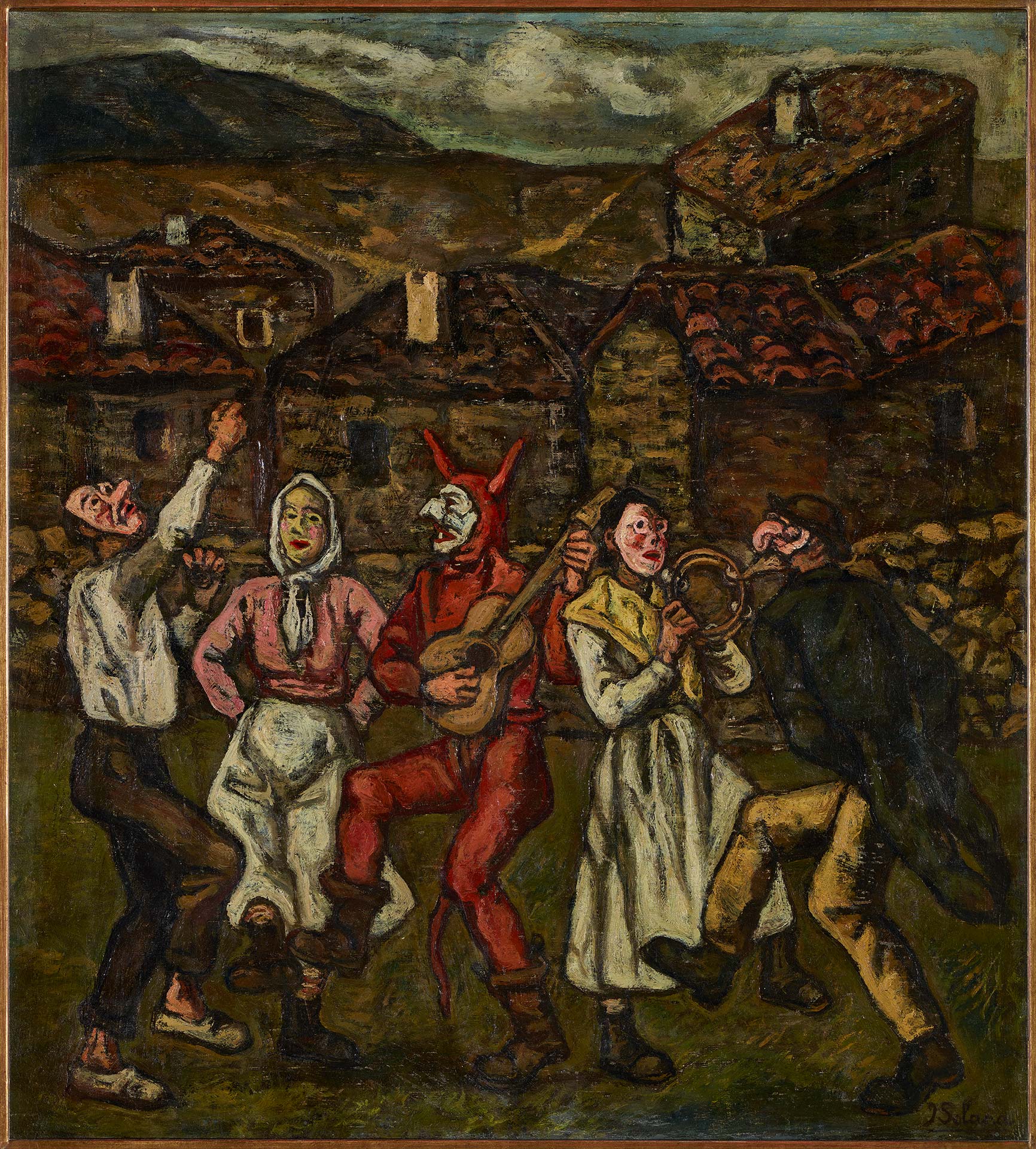
José Gutiérrez Solana (Madrid, 1886-1945)
Carnival in a Village (Village Masks)
circa 1933–1937
WORK INFORMATION
Oil on canvas, 67 x 61 cm
OTHER INFORMATION
Signed in the lower right-hand corner: "J. Solana"
The village carnivals depicted by Solana are different to the ones that took place in cities, which they undoubtedly attempted to emulate. The figures taking part are real people who are simply altered by the fact that they wear masks. They appear as grotesque figures participating in any local fiesta, roughly dressed and with basic masks, in contrast to the variety of fine costumes and impressive masks seen in the city.
Like their city counterparts, these figures aim to escape the poverty of their normal existence with the intention of becoming something else, even if only for a few hours, taking refuge in the anonymity of the masks that conceal their faces as well as their thoughts, a fact that gives them license to take liberties and behave raucously.
The aesthetic of the urban carnival is one of violence in comparison to the tranquility of its rural equivalent. Solana depicted village people wearing simple clothes and masks and playing humble instruments such as tambourines and guitars, the music of which enlivens the event. However, he also conveyed a sense of festiveness, movement and life that is absent from the urban events.
Solana liked to travel around the villages of Spain taking notes and observing customs and behaviour, which he subsequently depicted in his paintings. He undoubtedly preferred these village festivals for their sincerity and realism. A down-to-earth individual, Solana just depicted what he saw at a particular moment without prejudice and without a subjective viewpoint.
Carnival in a Village is a simple composition divided into three scenes: the village people, the village and the landscape in the background. Solana used pure tones, particularly white, to create lively, luminous figures that are skilfully outlined against
the green of the meadow and against the simple stone houses in the background. Once again he reveals his masterly command of colour in this interplay of tonal harmonies.
The exact date of this canvas is unknown but the chromatic range, type of handling and technique suggest that it was painted in the 1930s and that Solana was particularly happy with it, for which reason he sent it to Paris to be displayed in the Spanish Pavilion at the International Exhibition alongside La Montserrat by Julio González, The Reaper by Miró and Guernica by Picasso.
María José Salazar

